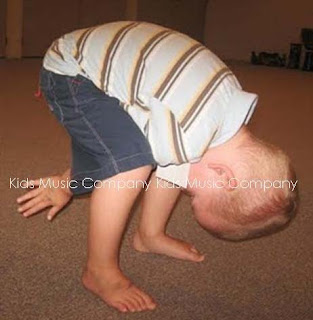

 Kids love drumming. There is something primeval about the need to bang something to make a sound. It offers a child a satisfying experience involving lots of senses, control over his/her environment and fosters an exploring mind. - And it doesn’t have to cost money!
Kids love drumming. There is something primeval about the need to bang something to make a sound. It offers a child a satisfying experience involving lots of senses, control over his/her environment and fosters an exploring mind. - And it doesn’t have to cost money!
Children enjoy exploring the sounds of different objects. Often more fun is had from drums which are invented or discovered, from household objects or junk.
Drumming has two main benefits:
- Playing a semi-flexible surface with the hands helps children explore a sound source directly through their own skin. When a child drums with his hands he gets immediate feedback on the relationship between touching the surface and the resultant creation of the sound. The child also receives sensory information about the pressure he needs to use to make the sound, and how that pressure changes the volume of the sound. For these reasons children should first explore possible sound sources with their hands. The child will also probably want to explore with their mouths too, so make sure the object is safe for them to do this.
- Exploring different sound sources helps a child understand our world and helps develop an enquiring mind. Once a child has explored an object with his hands, and possibly drummed on it, add some (gentle on the ears) beaters; wooden spoons are ideal, or use short lengths of doweling or driftwood. At this point children need to develop sufficient eye-hand coordination to aim the beater on to the surface of the “drum”. This is more difficult than feeling the impact through their fingers but a child will find satisfaction in exploring the different sounds he can make by hitting different objects.
Help the child explore by collecting a variety of containers from packaging and your recycle box. ALWAYS MAKE SURE THE OBJECT IS SAFE FOR YOUR CHILD TO HANDLE. Drums can be discovered from a variety of materials from egg cartons to yoghurt pots, plastic plant pots to shoe boxes.
In a large bucket, box or laundry tub collect a mixture of containers. Boxes are great: Cardboard, plastic or smooth wooden boxes will work, in fact any box which is rigid enough to hold its shape once it is hit. Plastic ice cream boxes are ideal. Play them with the lid on, so they stay in shape.
Buckets make ideal drums, as well as large smooth-edged tin cans, (You might want to restrict the beater to wood or plastic as metal on metal is pretty hard on the ears!)
The large storage container itself can often be the favourite drum. Large plastic containers and even sturdy boxes make an excellent bass and of course double as the storage unit.
Don’t limit your child to hollow “drum” sounds. Many kitchen sounds are fun to bang, stir and scrape. One of my son’s favourite sounds when he was small was one he discovered by placing two wire care racks on top of each other at a bit of an angle. He then hit them with a metal fish slice. The bouncing sound created was somewhat like brushes on a cymbal.
Let your children explore the sounds. Join in with them and scrape, tap, stir and bang the objects. Play some recorded music and jam along together. Then save all the objects in the large container, for use another day.




